 My friend John Stiles and I took a day off work on a week day and drove north out of Bangkok early in the morning in search of the famous Lopburi sunflower fields . . . they were suppose to be coming into bloom this time of year (November 2017).
My friend John Stiles and I took a day off work on a week day and drove north out of Bangkok early in the morning in search of the famous Lopburi sunflower fields . . . they were suppose to be coming into bloom this time of year (November 2017).
 Just an easy 1 1/2 hour drive up a divided highway to Lopburi.
Just an easy 1 1/2 hour drive up a divided highway to Lopburi.
 We began the day before first light, so when we came across this roadside restaurant on a pond, so we stopped.
We began the day before first light, so when we came across this roadside restaurant on a pond, so we stopped.
 We enjoyed some good coffee (they had a grand Italian coffee-making machine!) and dry honey toast with pork floss.
We enjoyed some good coffee (they had a grand Italian coffee-making machine!) and dry honey toast with pork floss.
 There was a dried fish stand setting up outside the restaurant when we arrived. Very photogenic. We would see a lot of dried fish throughout the day.
There was a dried fish stand setting up outside the restaurant when we arrived. Very photogenic. We would see a lot of dried fish throughout the day.
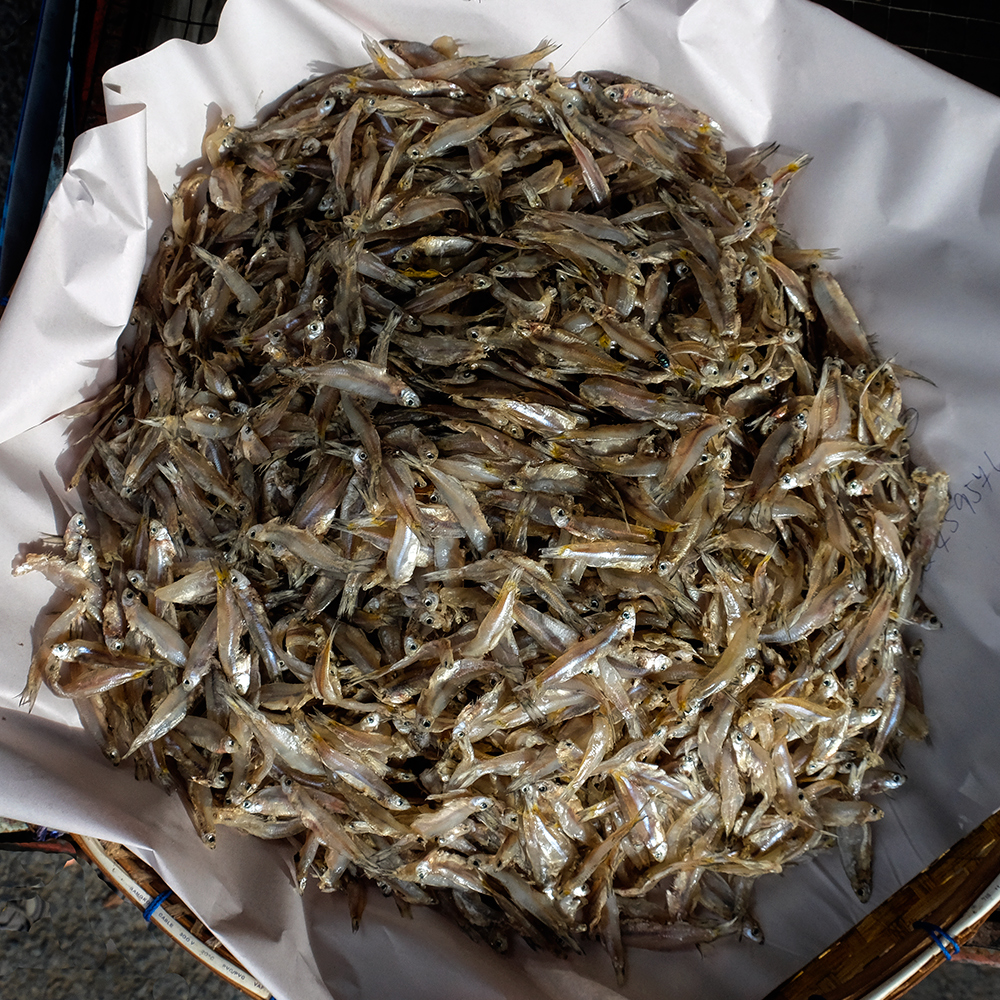 Small dried 'sprats' . . . my favorite.
Small dried 'sprats' . . . my favorite.
 The fish hawker and his beautifully arranged fish.
The fish hawker and his beautifully arranged fish.
 The colors and arrangement oft these dried fish were captivating.
The colors and arrangement oft these dried fish were captivating.
 Good in soups and salads.
Good in soups and salads.
 A heap of dried fish heads . . . for making fish head soup!
A heap of dried fish heads . . . for making fish head soup!
 There were also some fresh fish for sale as well.
There were also some fresh fish for sale as well.
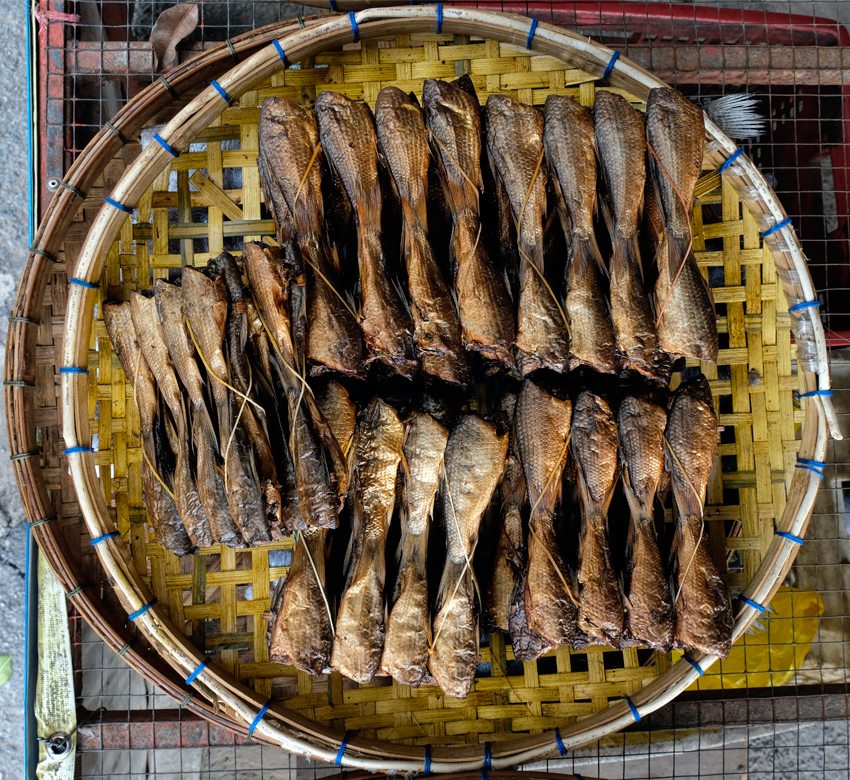 Drying fish on the round baskets.
Drying fish on the round baskets.
 These are rice treats with either fish, beans, or sweets wrapped in leaves. We didn't buy any fish or rice treats . . . and headed up the rural road toward Lopburi.
These are rice treats with either fish, beans, or sweets wrapped in leaves. We didn't buy any fish or rice treats . . . and headed up the rural road toward Lopburi.
 We left Bangkok (Minburi) around 6:30 am, loaded a general Lopburi address into the GPS, and headed up the big highway for the hour and a half drive. When we got a few miles outside of Lopburi, we left the highway for the small roads . . . and found several wonderful small Buddhist Wats.
We left Bangkok (Minburi) around 6:30 am, loaded a general Lopburi address into the GPS, and headed up the big highway for the hour and a half drive. When we got a few miles outside of Lopburi, we left the highway for the small roads . . . and found several wonderful small Buddhist Wats.
 Right off a small road to Lopburi we found an ancient Wat . . . with a beautiful spirit house.
Right off a small road to Lopburi we found an ancient Wat . . . with a beautiful spirit house.
 Monks quarters.
Monks quarters.
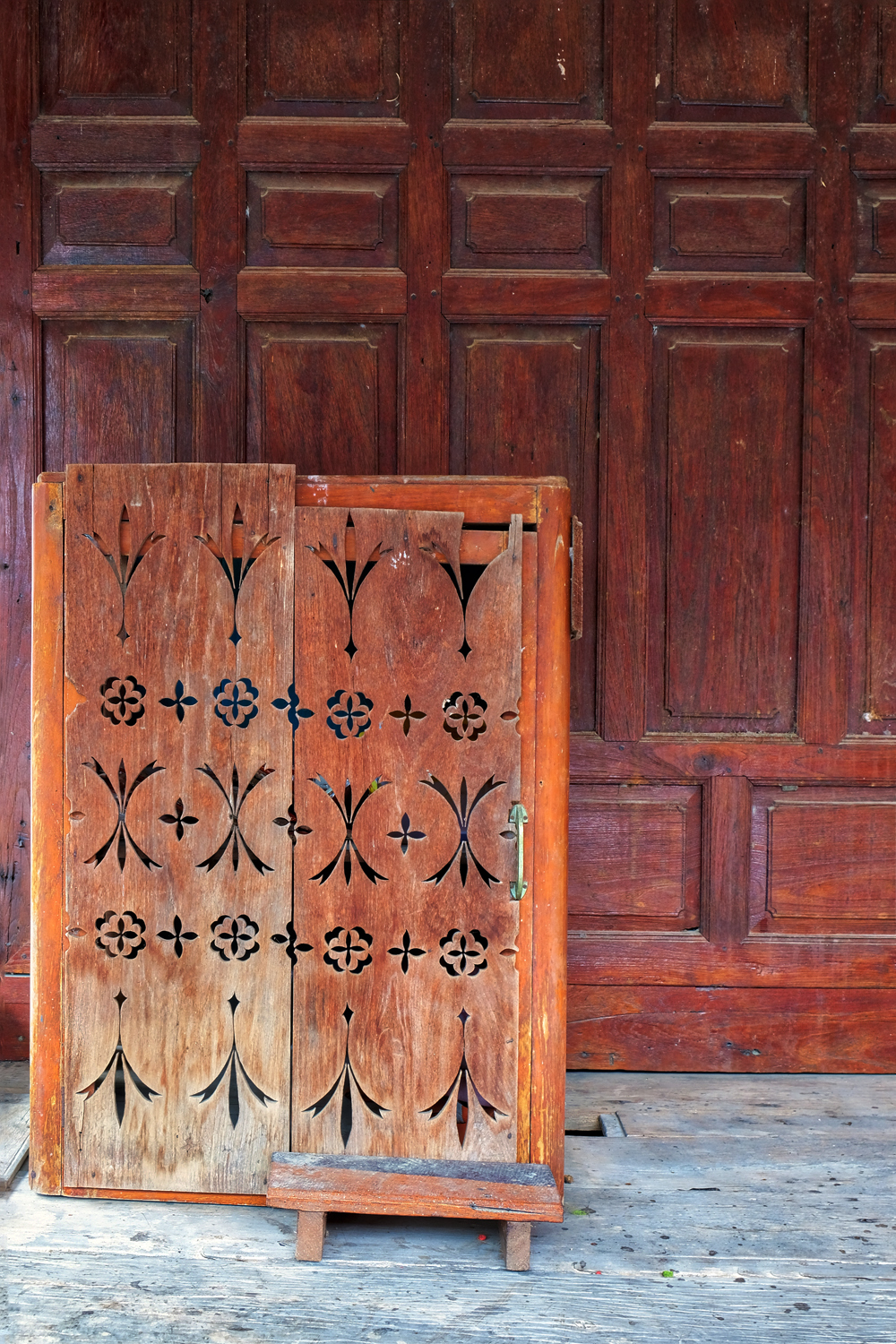 I enjoy walking around old Wats just to see what can be seen. Here, a still life portrait of items arranged in the space of a monks house porch. I love the makeshift, slapped together feel of the shoe box . . . no concern for aesthetic geometry . . . yet beauty was achieved.
I enjoy walking around old Wats just to see what can be seen. Here, a still life portrait of items arranged in the space of a monks house porch. I love the makeshift, slapped together feel of the shoe box . . . no concern for aesthetic geometry . . . yet beauty was achieved.
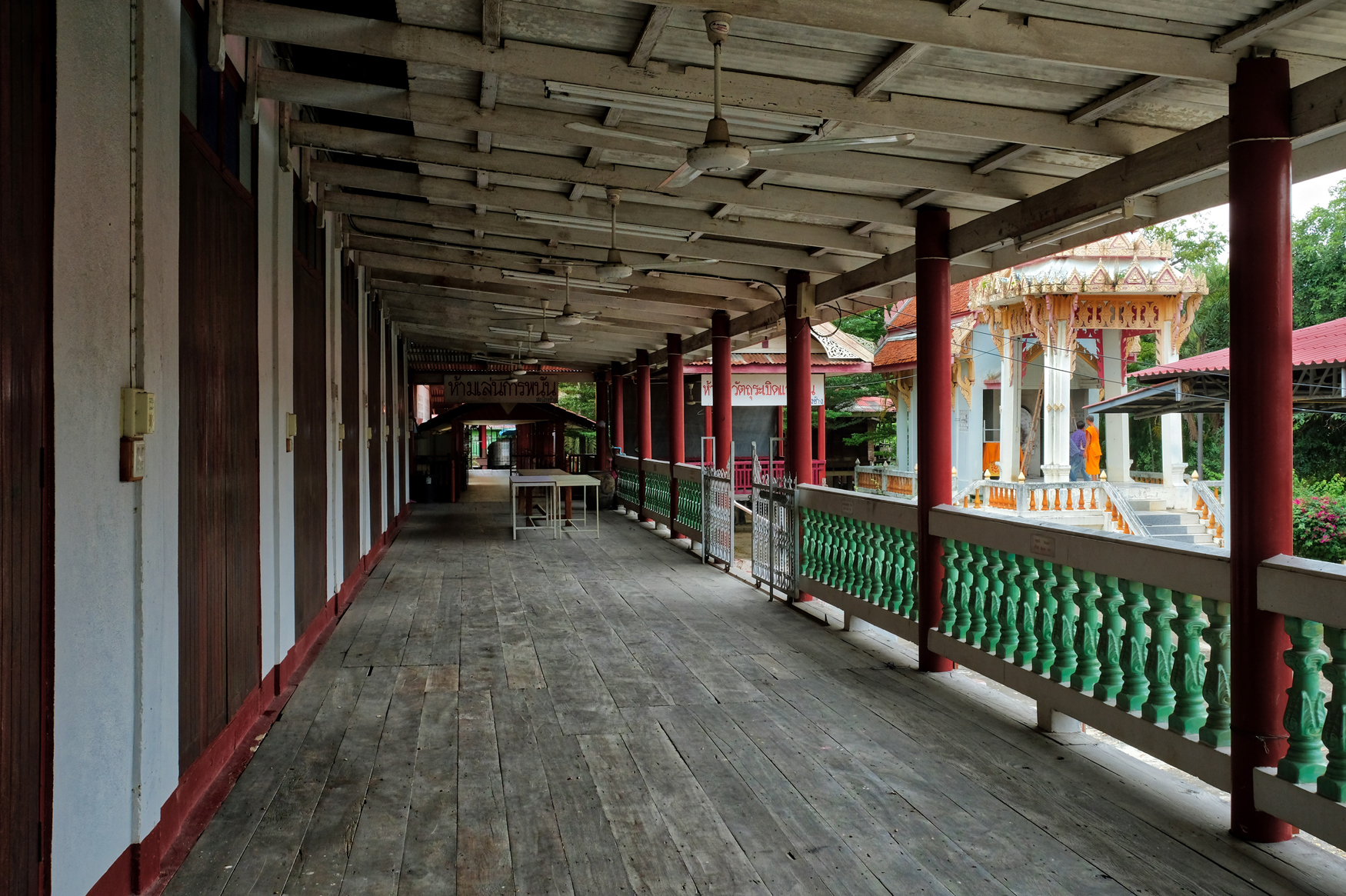 In front of a meditation hall. The crematorium can be seen at far right . . . the monks were consulting with contractors about repairs needed to the crematorium.
In front of a meditation hall. The crematorium can be seen at far right . . . the monks were consulting with contractors about repairs needed to the crematorium.
 An alcove for a magnificent Buddha image.
An alcove for a magnificent Buddha image.
 I found the steering wheel on this ceremonial cart interesting.
I found the steering wheel on this ceremonial cart interesting.
 I love old unattended things. This ceremonial cart sitting beside a klong was a thing of beauty (to me).
I love old unattended things. This ceremonial cart sitting beside a klong was a thing of beauty (to me).
 The old ceremonial cart by the klong.
The old ceremonial cart by the klong.
 The old wooden Wats have so many beautiful scenes to photograph.
The old wooden Wats have so many beautiful scenes to photograph.
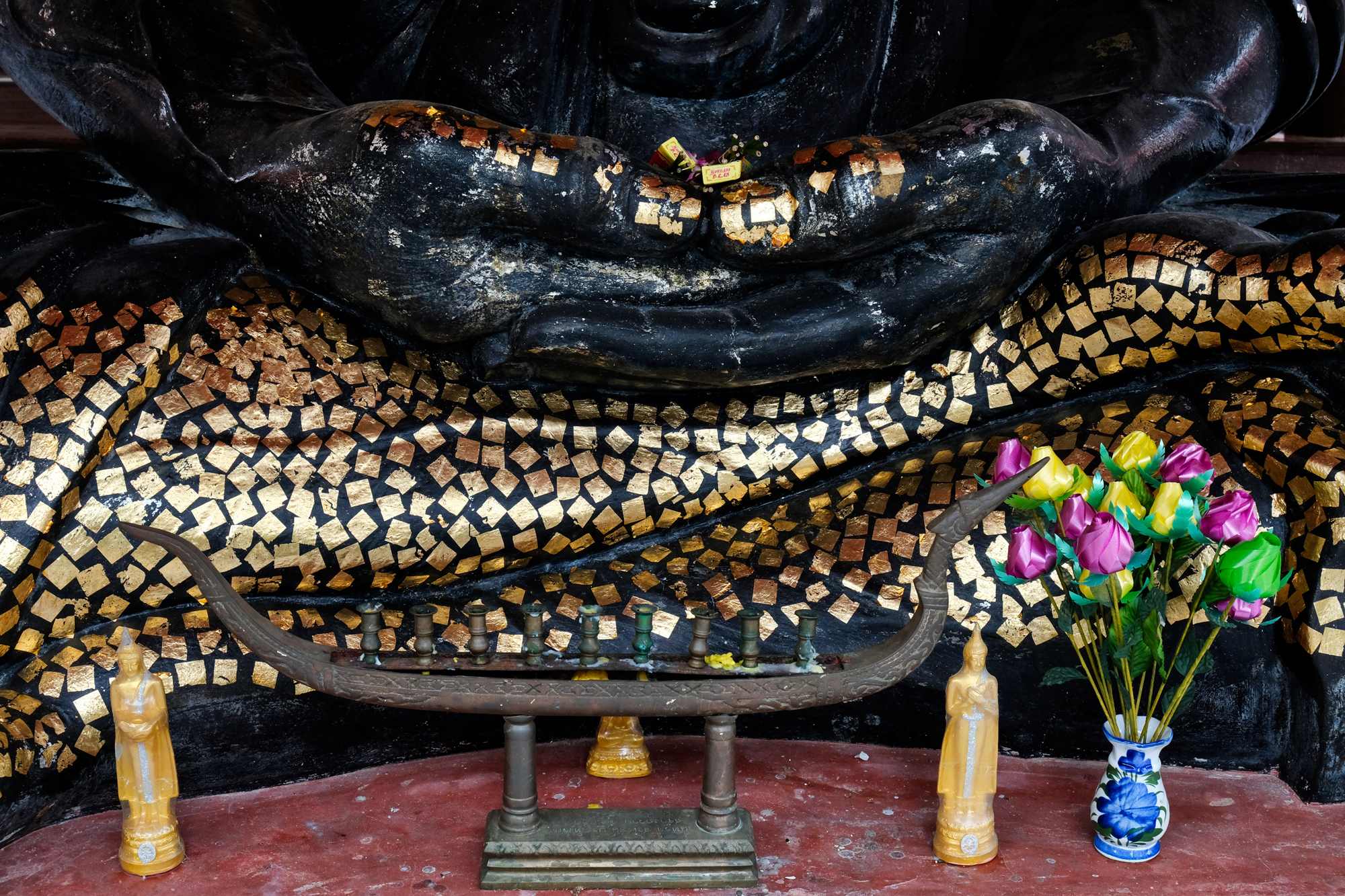 The old Wat held a beautiful black Buddha. I am always interested in the devotional markings pilgrims have left behind.
The old Wat held a beautiful black Buddha. I am always interested in the devotional markings pilgrims have left behind.
 The pattern of the gold leaf applications is fantastic.
The pattern of the gold leaf applications is fantastic.
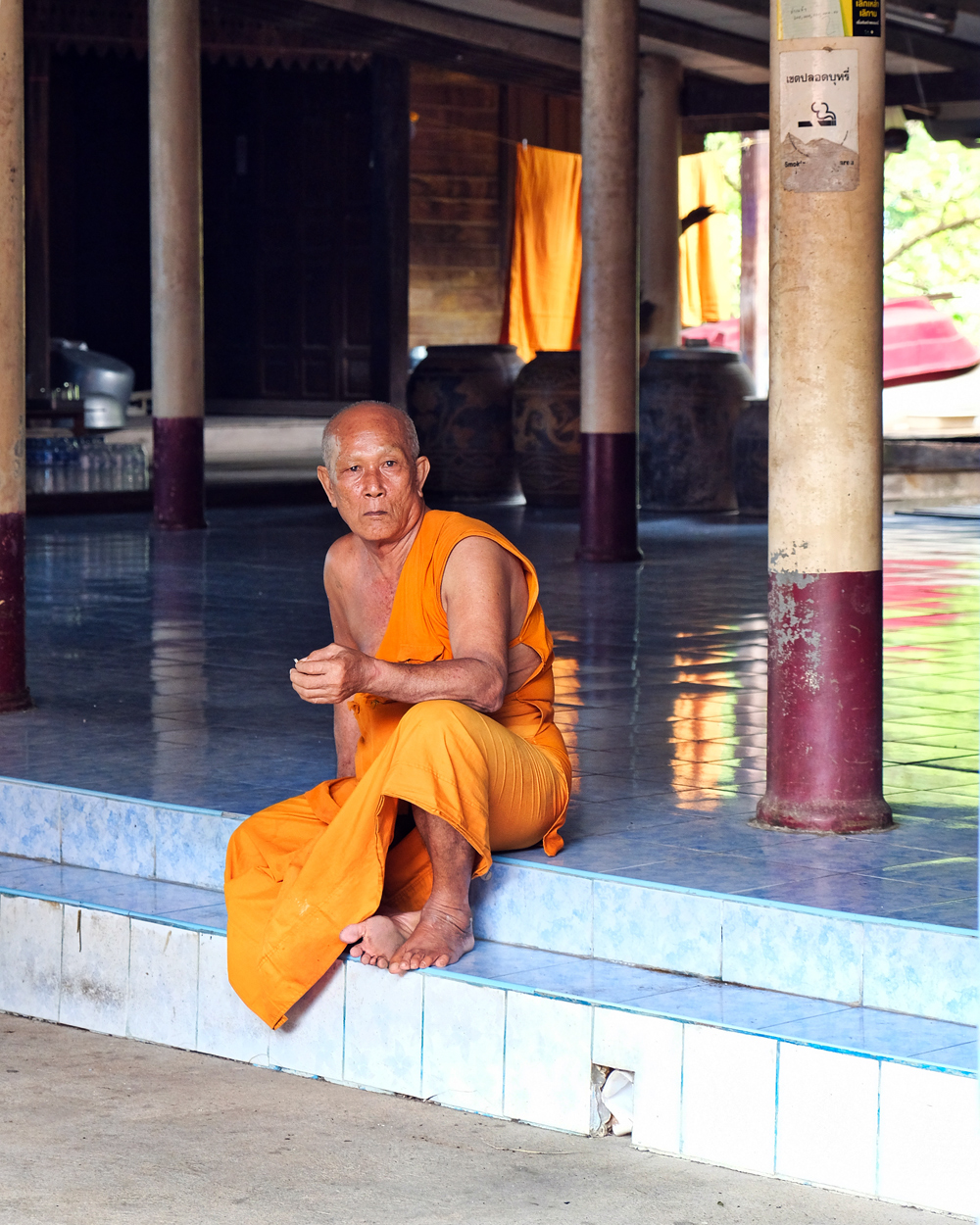 We saw only a few monks out and about. This monk stepped out for a cigarette. I asked if I could photograph him and he nodded OK.
We saw only a few monks out and about. This monk stepped out for a cigarette. I asked if I could photograph him and he nodded OK.
 Around he back of the monk's quarters . . . rural Wats are sometimes disheveled like this. The monks are not there to garden, and the local people who support the Wat are busy working hard to stay alive.
Around he back of the monk's quarters . . . rural Wats are sometimes disheveled like this. The monks are not there to garden, and the local people who support the Wat are busy working hard to stay alive.
 The old surfaces of the ancient monks' quarters had a marvelous patina.
The old surfaces of the ancient monks' quarters had a marvelous patina.
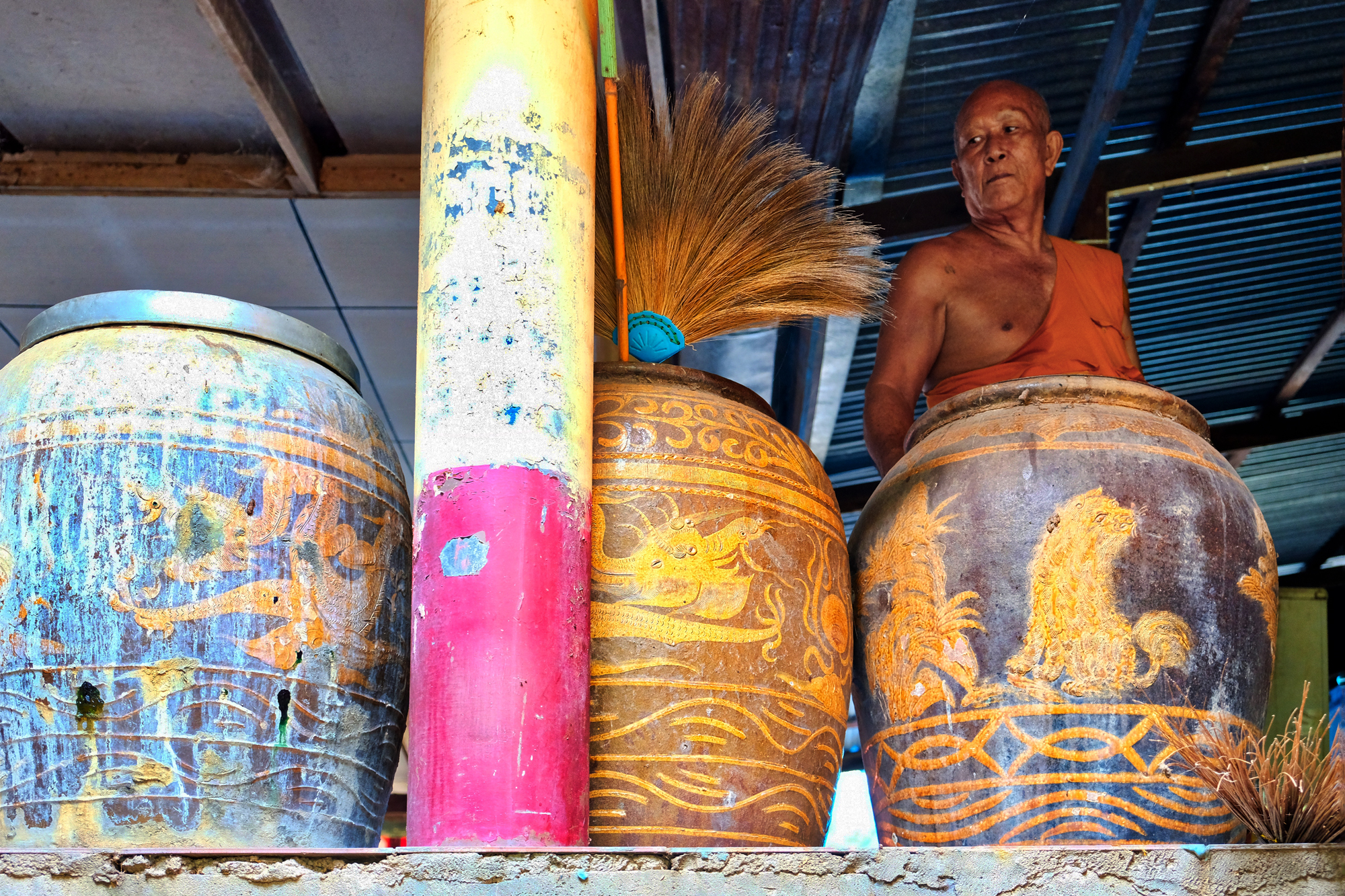 Monk and water urns.
Monk and water urns.
 A powerful Buddha image.
A powerful Buddha image.
 I looked one last time at my final destination . . .
I looked one last time at my final destination . . .
 The practical side of Wat life. We left this wat and drove down a tiny rural farm road until we came to . . .
The practical side of Wat life. We left this wat and drove down a tiny rural farm road until we came to . . .
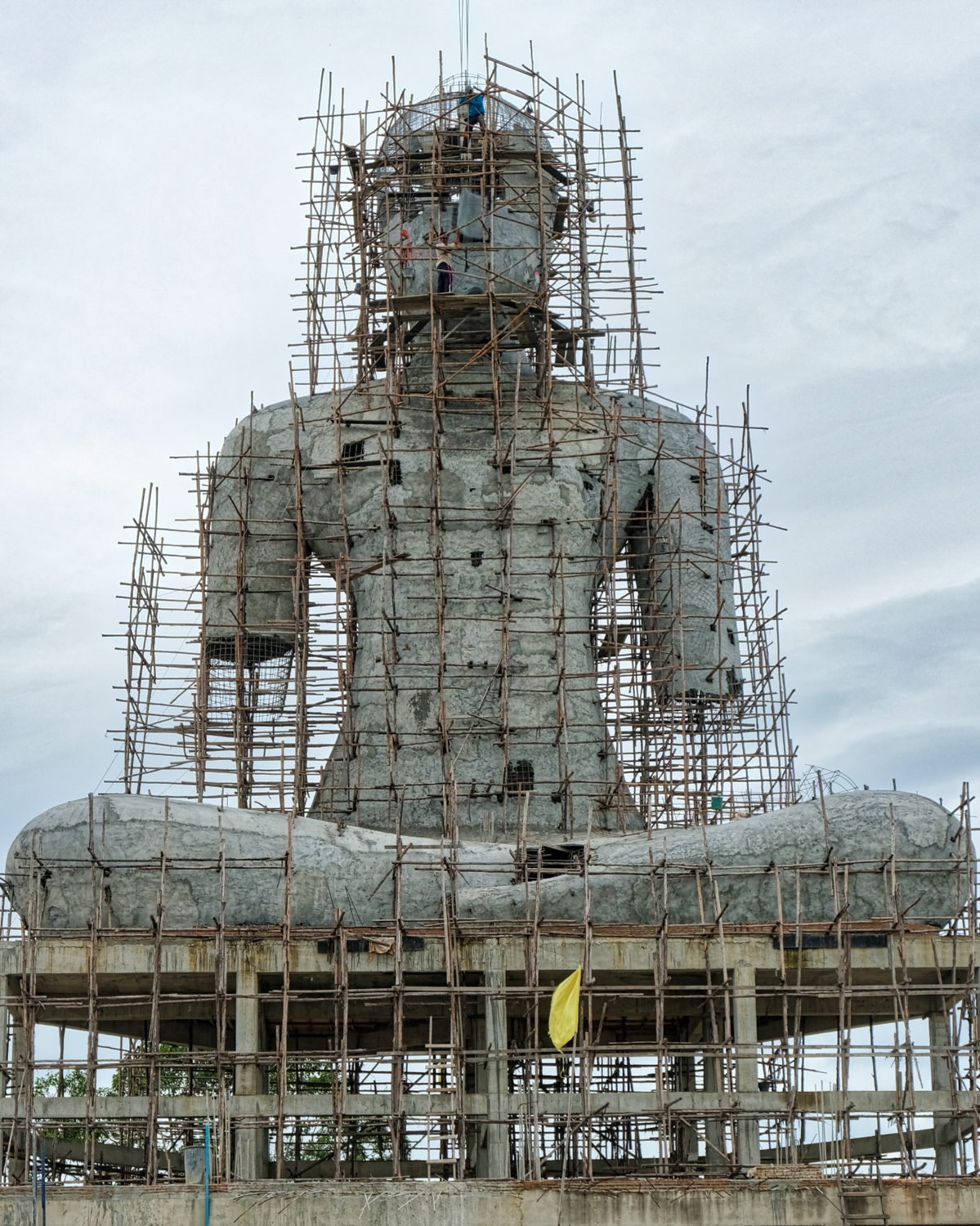 Just around the corner . . . a colossal Buddha image under construction. 10 stories tall with two workers crawling all over it.
Just around the corner . . . a colossal Buddha image under construction. 10 stories tall with two workers crawling all over it.
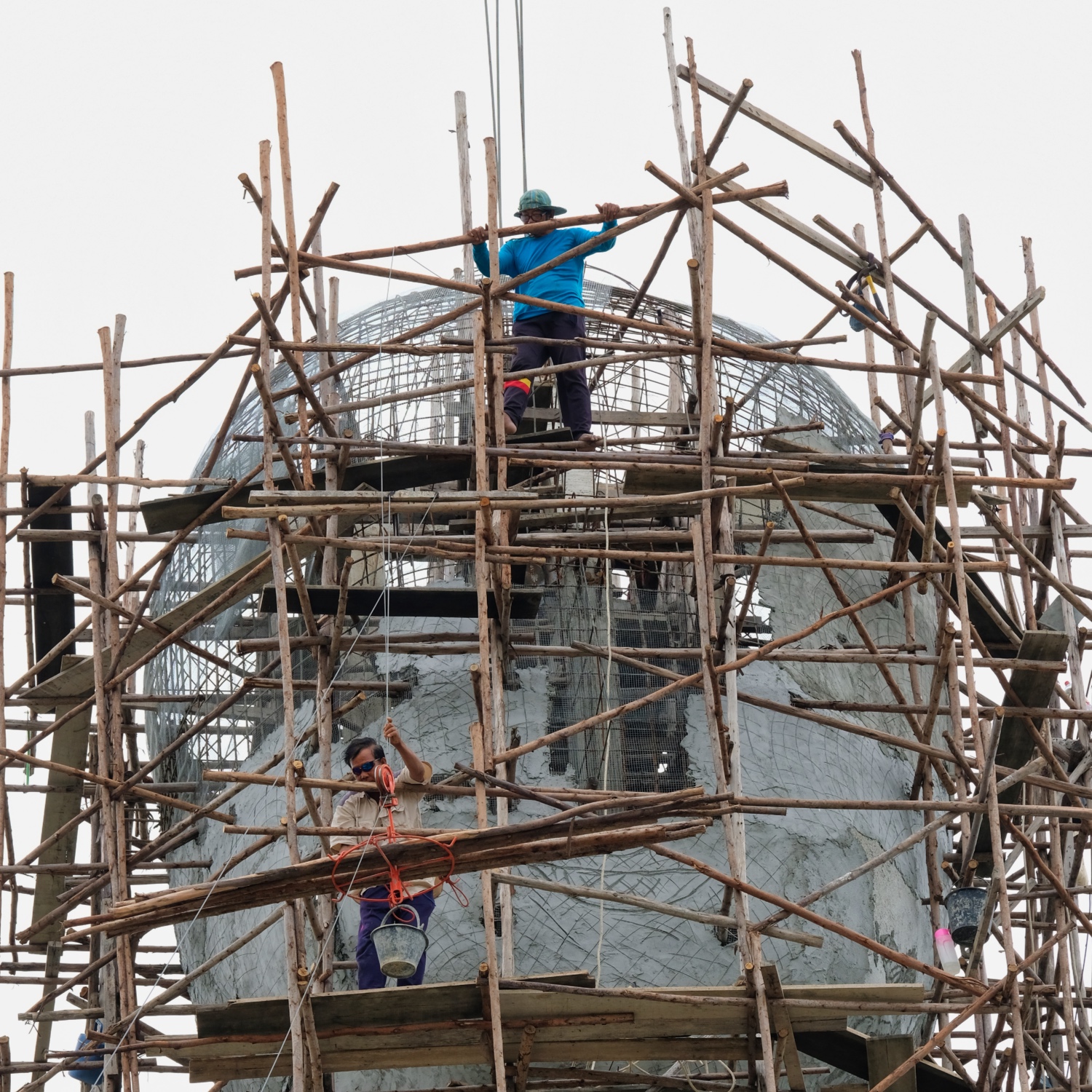 Sculpting the Buddha's head way up on bamboo scaffolding.
Sculpting the Buddha's head way up on bamboo scaffolding.
 In a lot just in front of the giant Buddha under construction were these racks being filled with fish to be dried.
In a lot just in front of the giant Buddha under construction were these racks being filled with fish to be dried.
 Fish spreaders . . .
Fish spreaders . . .
 Another 500 meters walk up the country lane and we encountered another, bigger fish drying operation . . . and the same two guys spreading fish!
Another 500 meters walk up the country lane and we encountered another, bigger fish drying operation . . . and the same two guys spreading fish!
 They were drying a variety of fish on bamboo racks.
They were drying a variety of fish on bamboo racks.
 Some of the drying fish had been split and skinned.
Some of the drying fish had been split and skinned.
 Some of the drying fish had been gutted and beheaded. There was a lot of drying fish here.
Some of the drying fish had been gutted and beheaded. There was a lot of drying fish here.
 John asked one of the fish spreaders where the fish came from, since we were a couple hundred kilometers from the sea. They said it was all imported from Cambodia fresh every day.
John asked one of the fish spreaders where the fish came from, since we were a couple hundred kilometers from the sea. They said it was all imported from Cambodia fresh every day.
 I'm afraid we made this guy a little selfconsious with all the photography . . . DAMN TOURISTS!
I'm afraid we made this guy a little selfconsious with all the photography . . . DAMN TOURISTS!
 I took way too many photographs of these incredible fish patterns . . . .
I took way too many photographs of these incredible fish patterns . . . .
 Very strange things to see out in the Thai countryside. We left the drying fish behind and went looking for the sunflower fields.
Very strange things to see out in the Thai countryside. We left the drying fish behind and went looking for the sunflower fields.
 We eventually found a field that was just coming into flower.
We eventually found a field that was just coming into flower.
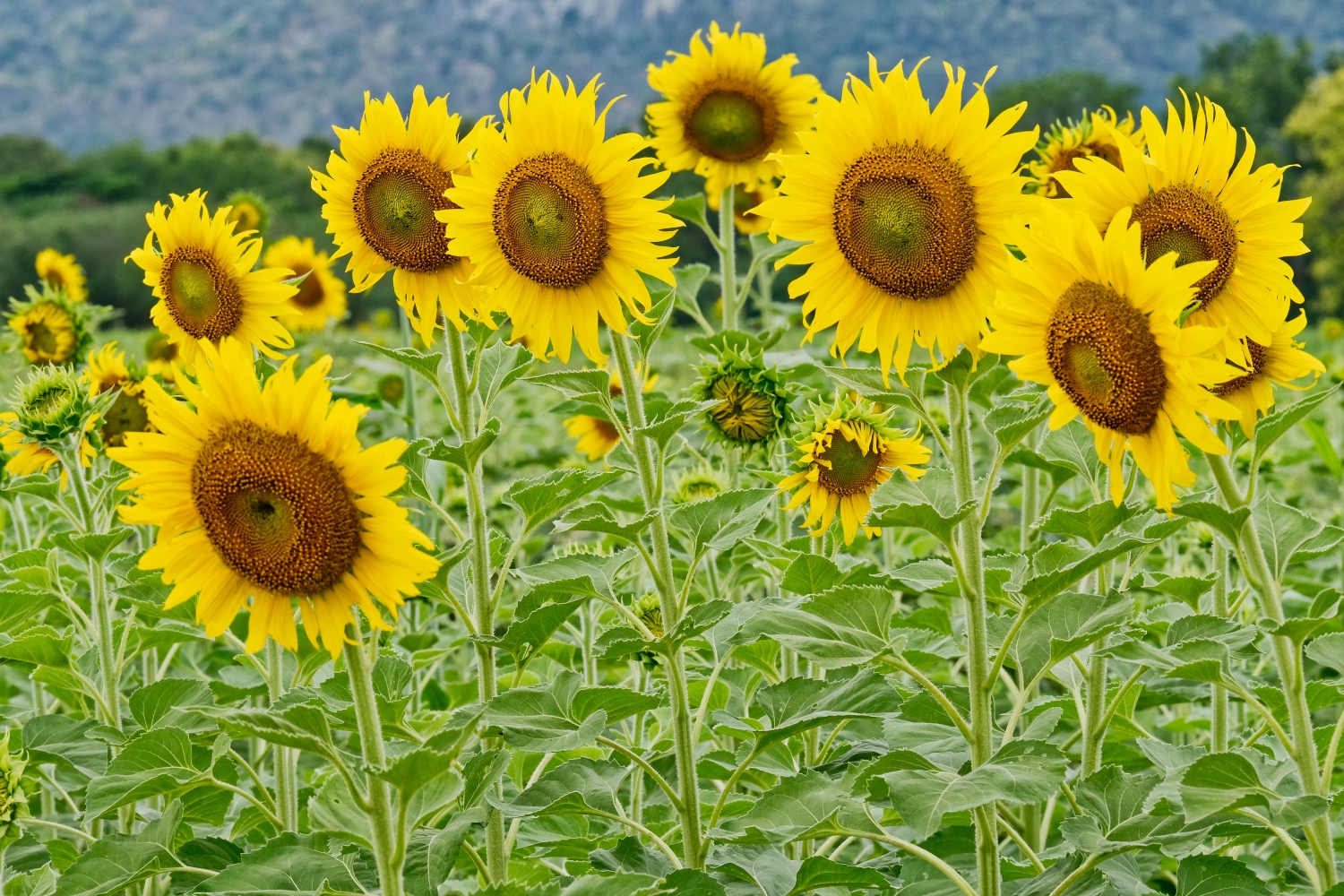 We first explored a little patch up a dirt path . . . away from another field that had quite a few other sunflower pilgrims.
We first explored a little patch up a dirt path . . . away from another field that had quite a few other sunflower pilgrims.
 New sunflowers budding are fantastically interesting things.
New sunflowers budding are fantastically interesting things.
 The sun was hiding behind the clouds, but that might have made the photography better . . . .
The sun was hiding behind the clouds, but that might have made the photography better . . . .
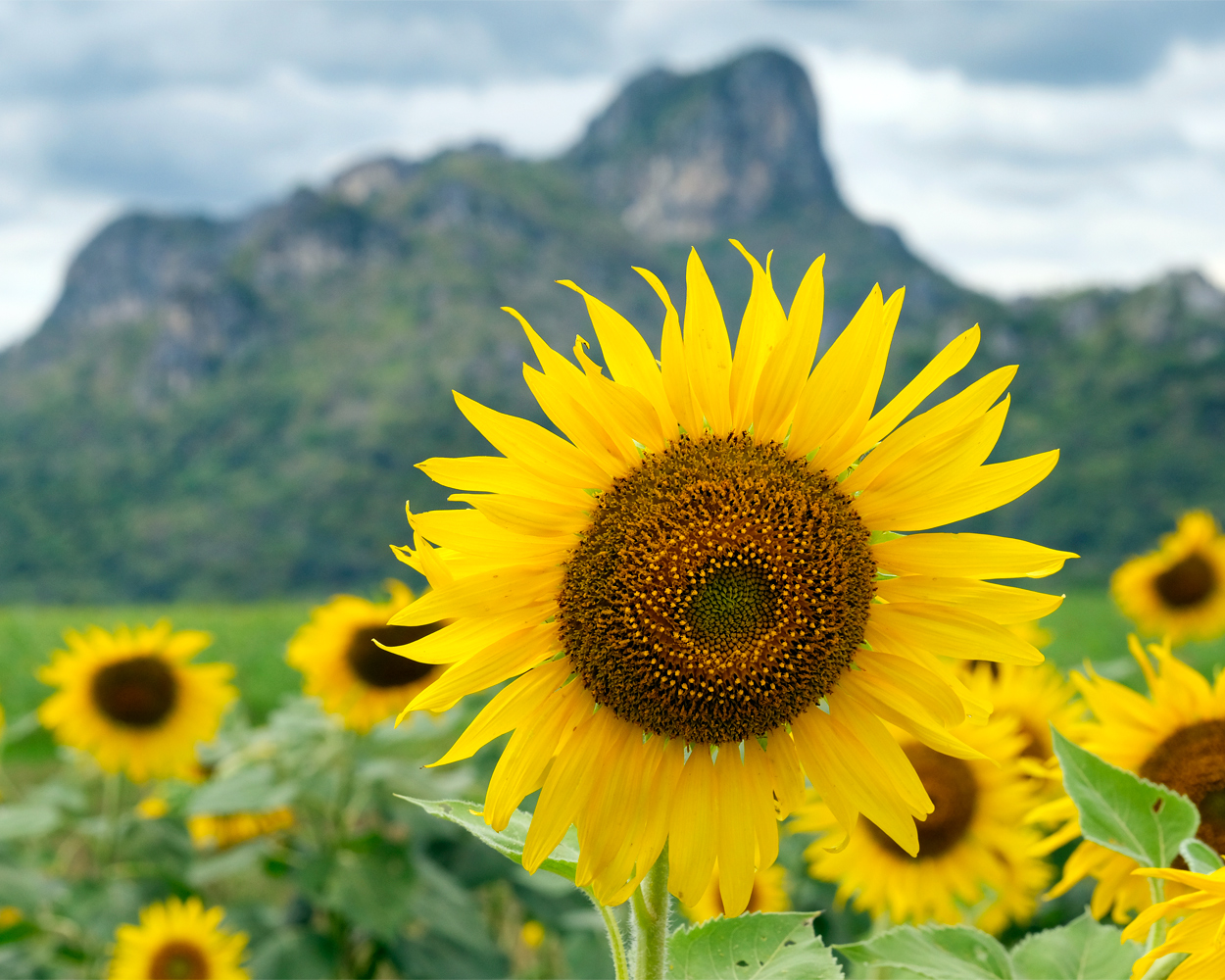 Beautiful sunflowers . . . they make you happy.
Beautiful sunflowers . . . they make you happy.
 A beautiful place to be on a Monday afternoon . . .
A beautiful place to be on a Monday afternoon . . .
 We passed by a field that had yet to flower. John, from Iowa and, like all people from Iowa, was an expert on sunflowers. He said that sunflowers have an 'internal clock' -- in other words, sunflowers planted a week after other sunflowers, will bloom one week later.
We passed by a field that had yet to flower. John, from Iowa and, like all people from Iowa, was an expert on sunflowers. He said that sunflowers have an 'internal clock' -- in other words, sunflowers planted a week after other sunflowers, will bloom one week later.
 An ice cream hawker found his way to here the Thai tourists were . . . as we had.
An ice cream hawker found his way to here the Thai tourists were . . . as we had.
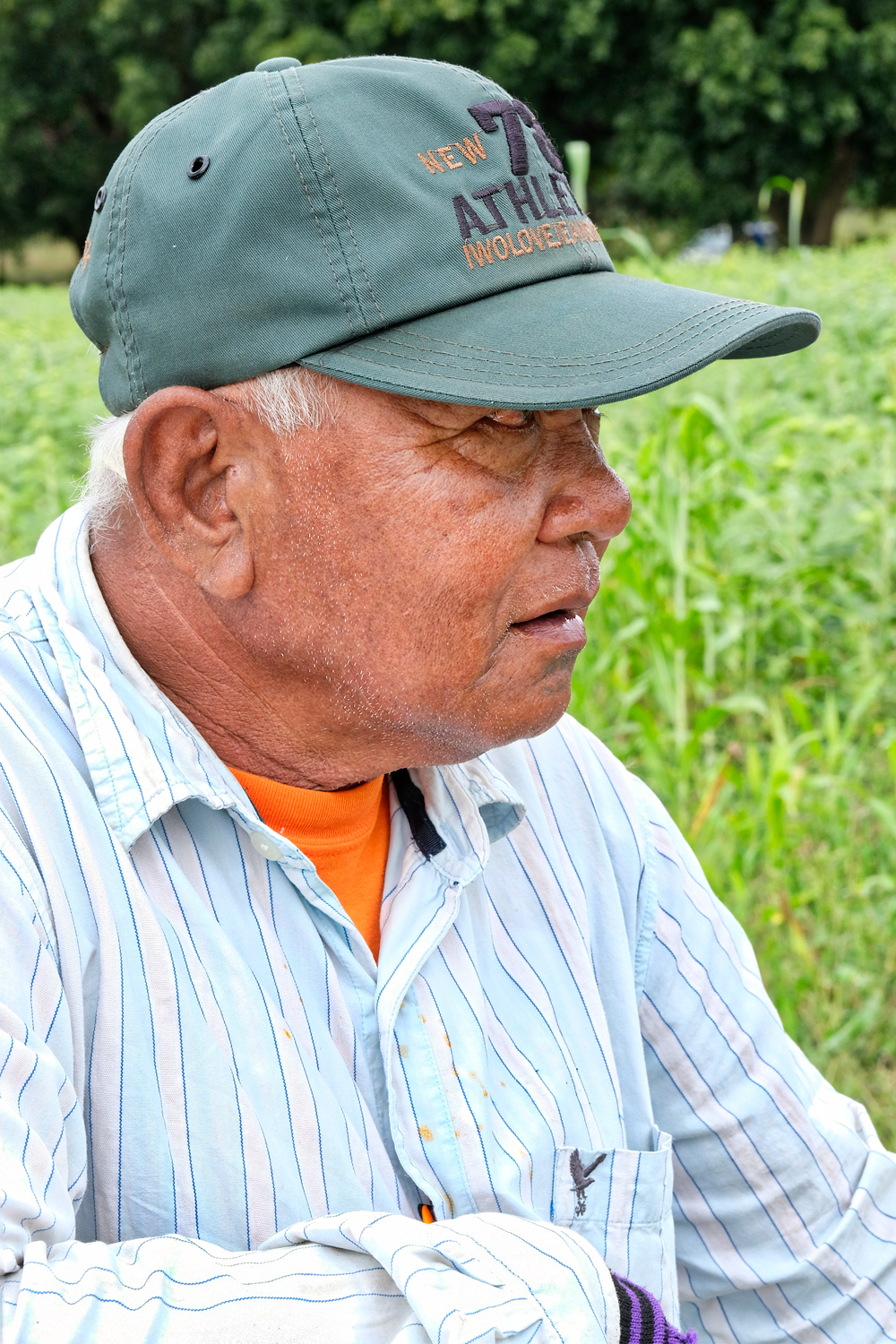 John bought an ice cream sandwich . . . literally, a slab of ice cream in between slices of bread. The hawker consented to this photograph.
John bought an ice cream sandwich . . . literally, a slab of ice cream in between slices of bread. The hawker consented to this photograph.
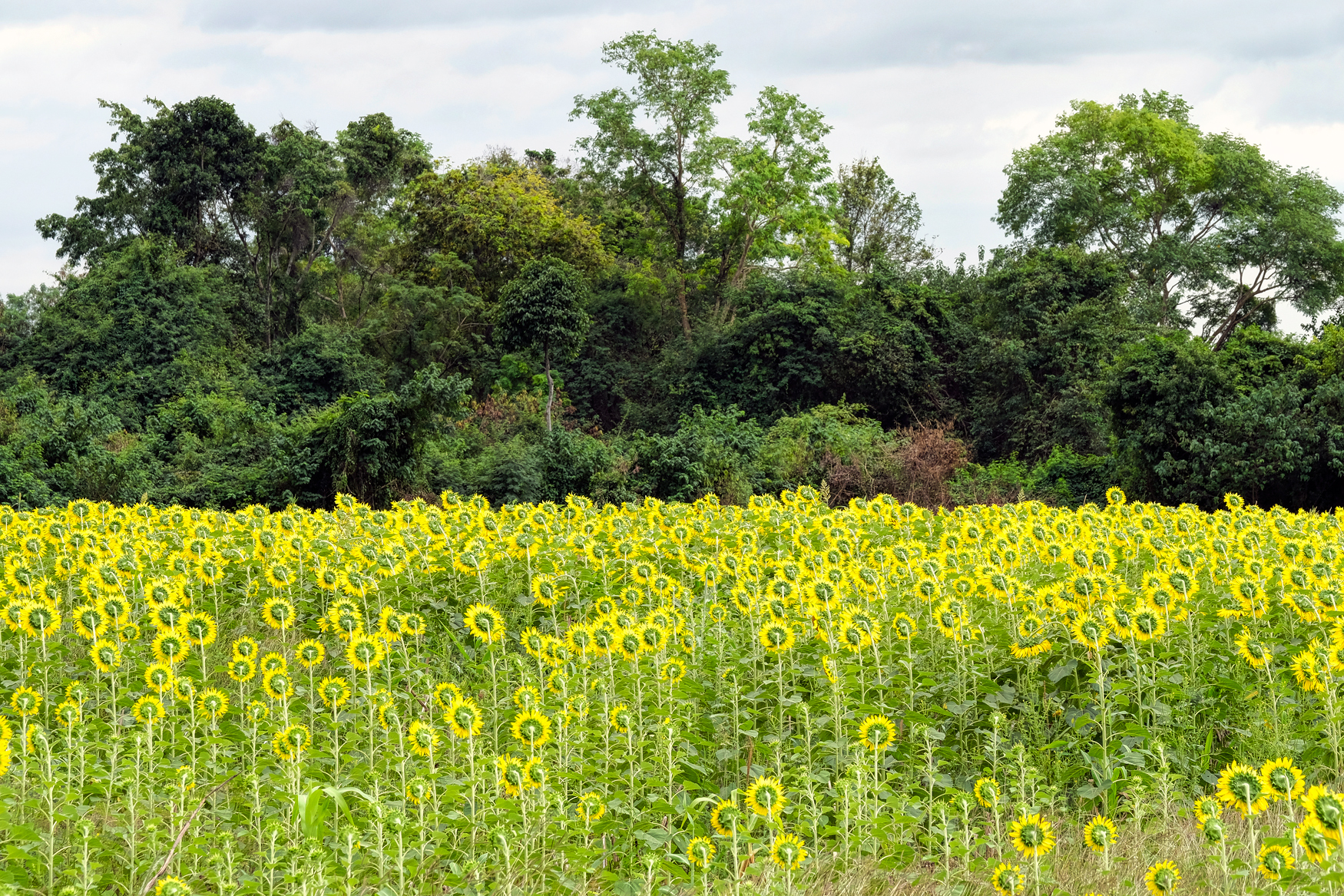 We found a larger field of blooms.
We found a larger field of blooms.
 This is more like it.
This is more like it.
 We were not alone, of course. Sunflower fields attract people like moths to a flame.
We were not alone, of course. Sunflower fields attract people like moths to a flame.
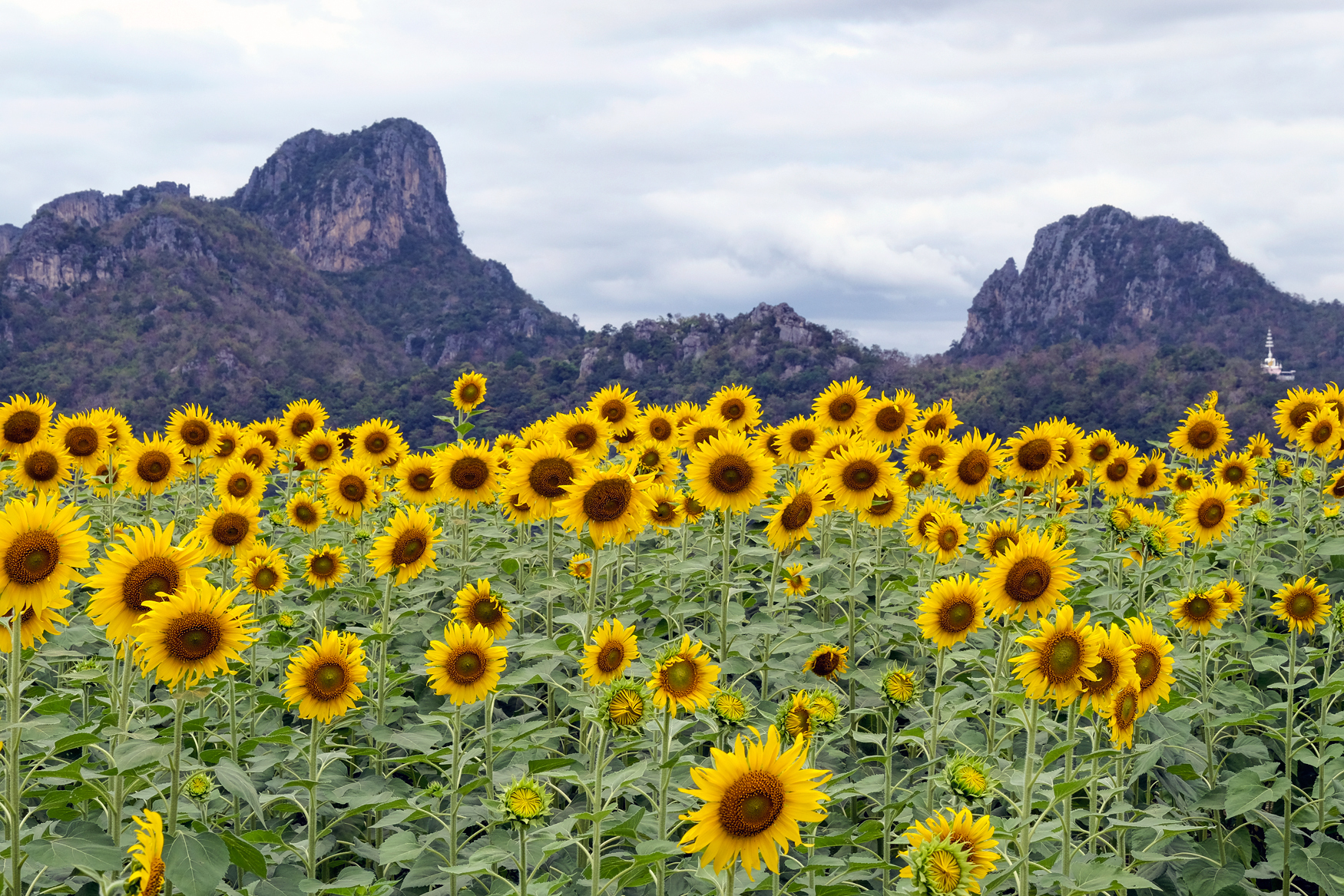 A gorgeous place to find a sunflower field . . . below the sharp hills with a Buddhist temple perched high up on a rise.
A gorgeous place to find a sunflower field . . . below the sharp hills with a Buddhist temple perched high up on a rise.
 The light was starting to fade as we headed out of the beautiful fields . . . we had a hilltop Buddha image to get to.
The light was starting to fade as we headed out of the beautiful fields . . . we had a hilltop Buddha image to get to.
 Rows and rows of sunflowers popping in and out of the sunlight.
Rows and rows of sunflowers popping in and out of the sunlight.
 This sweet, and nutty, couple were selling freshly salted and roasted sunflower seeds. I bought a kilo (they were delicious).
This sweet, and nutty, couple were selling freshly salted and roasted sunflower seeds. I bought a kilo (they were delicious).
 And off we went to find the hillside Buddha.
And off we went to find the hillside Buddha.
 This MUST be the road!
This MUST be the road!
 Yes, all the roads I have ever taken have led me to this place . . . the highway to hell!
Yes, all the roads I have ever taken have led me to this place . . . the highway to hell!
 The Peacock Temple was . . . . very interesting, that is for sure.
The Peacock Temple was . . . . very interesting, that is for sure.
 Chedis . . . and the snake-railed steps up to the big Buddha on the hill.
Chedis . . . and the snake-railed steps up to the big Buddha on the hill.
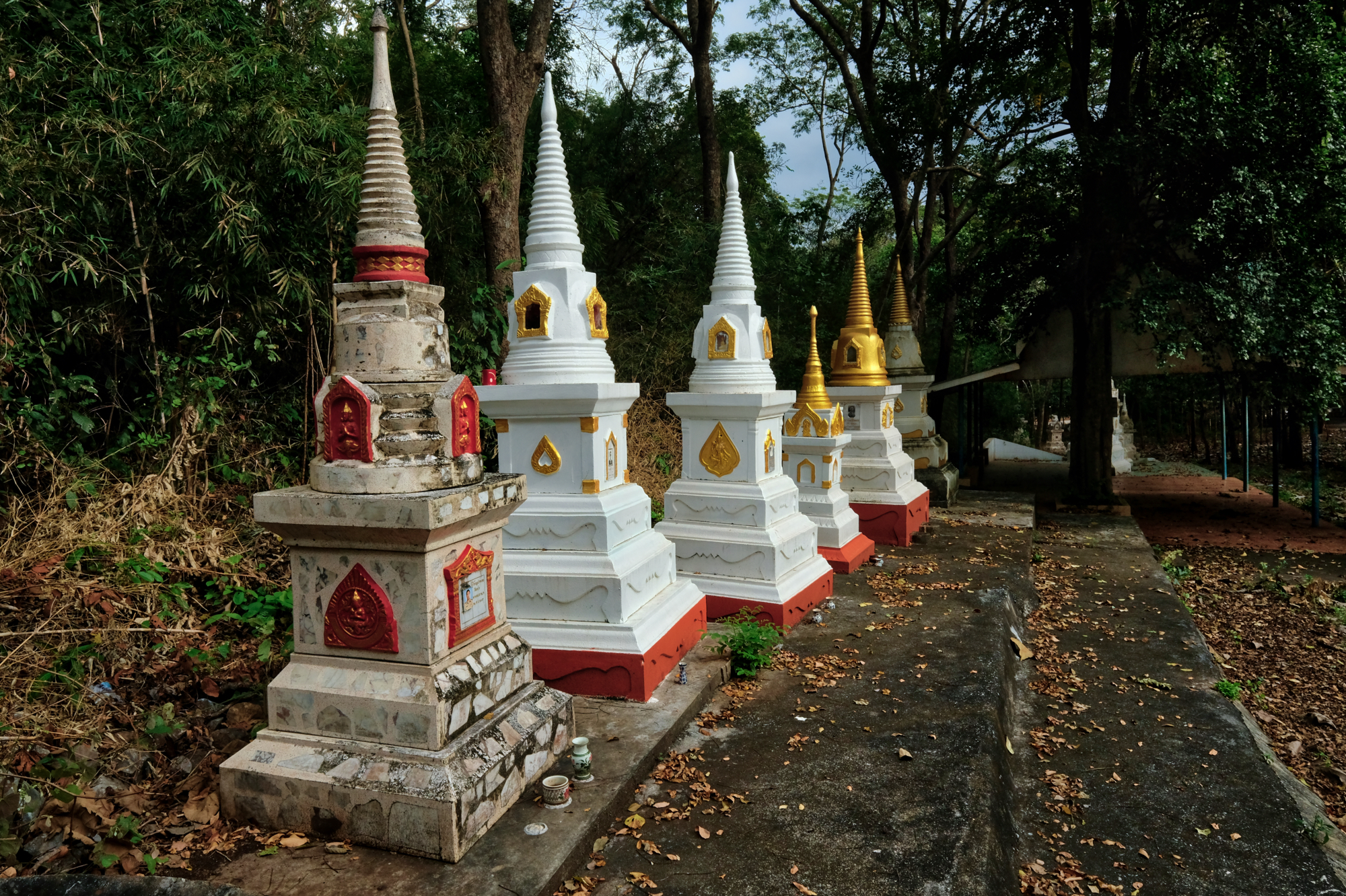 I love these rural Wats . . . in nature and not overly tended.
I love these rural Wats . . . in nature and not overly tended.
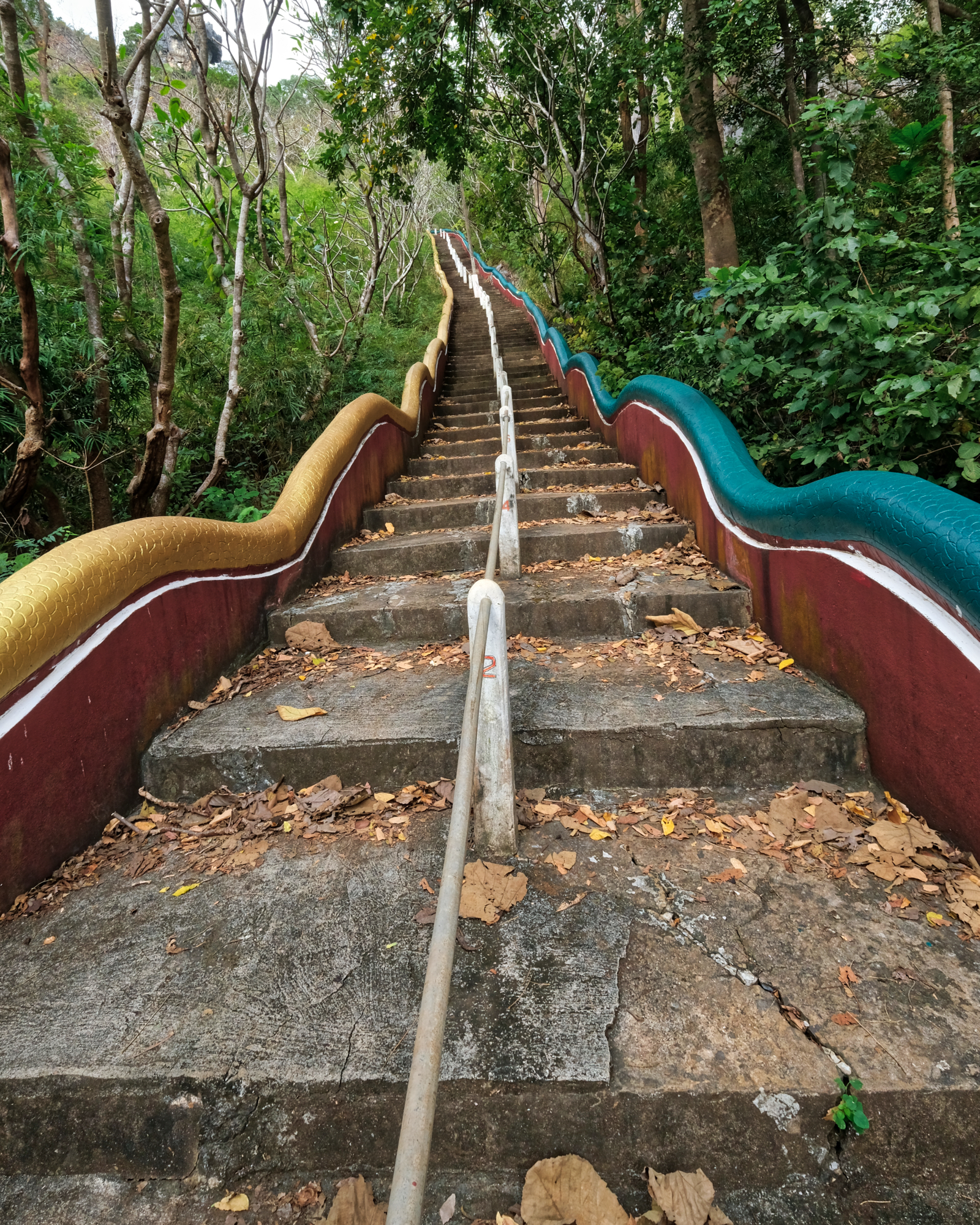 And so we started the climb up the temple stairs . . .
And so we started the climb up the temple stairs . . .
 And up and up we went. The stairs were numbered, so we didn't have to count them ourselves. However, we did not know how many total steps there were going to be!
And up and up we went. The stairs were numbered, so we didn't have to count them ourselves. However, we did not know how many total steps there were going to be!
 The walk to the top (436 steps in all) was well worth it . . . the view across the Thai landscape was remarkable!
The walk to the top (436 steps in all) was well worth it . . . the view across the Thai landscape was remarkable!
 The Peacock Temple below.
The Peacock Temple below.
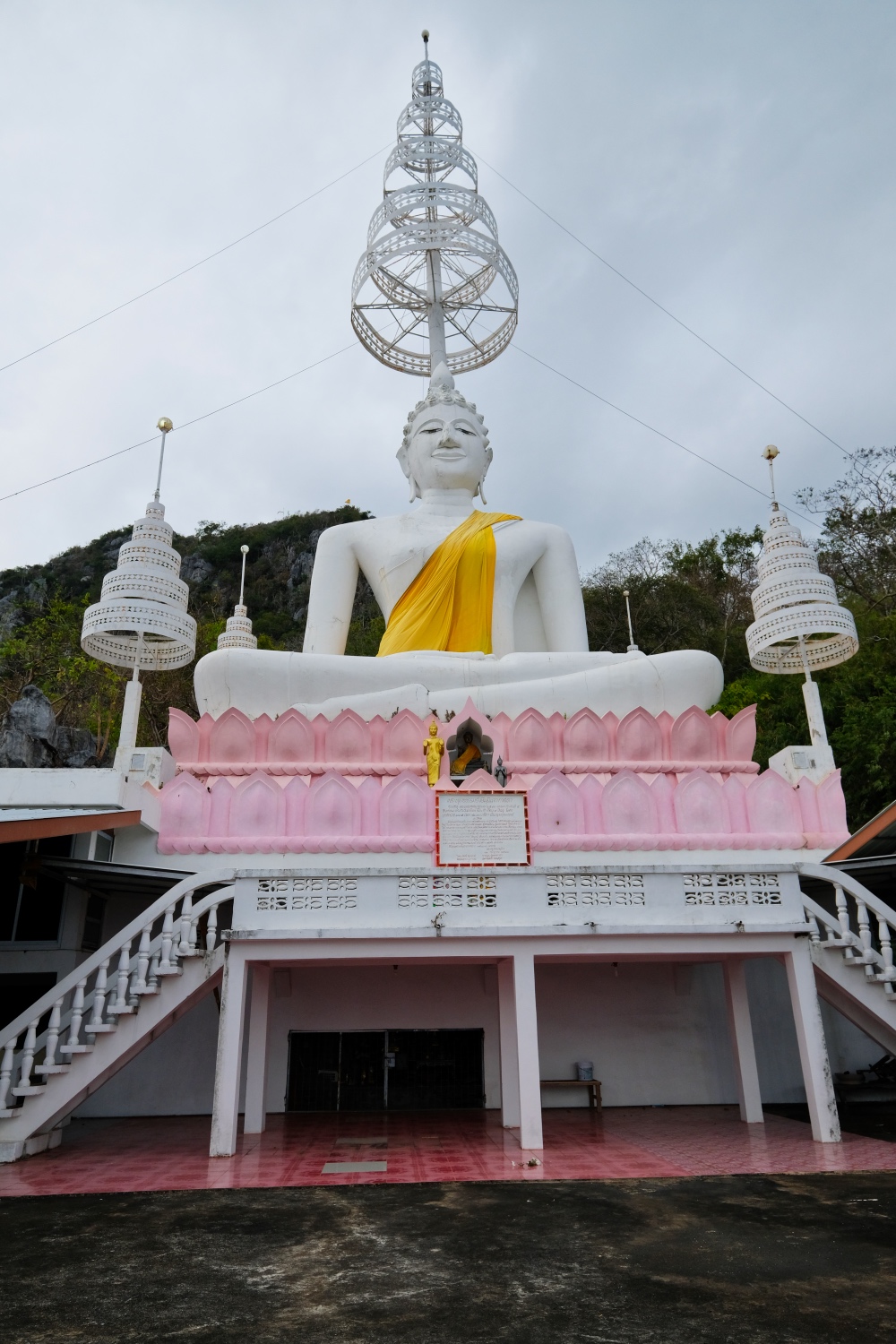 What we came to see: a giant Buddha image. Very beautiful.
What we came to see: a giant Buddha image. Very beautiful.
 There were several altars in and around the top of the climb . . . as well as some tunnels that went inside the mountain . . . we didn't explore these.
There were several altars in and around the top of the climb . . . as well as some tunnels that went inside the mountain . . . we didn't explore these.
 4:00pm at the top of a hill enjoying the view and the various altars.
4:00pm at the top of a hill enjoying the view and the various altars.
 After 30 minutes on the top of the hill, we made our way back down the dry leaf covered 436 steps.
After 30 minutes on the top of the hill, we made our way back down the dry leaf covered 436 steps.
 At last . . . the bottom in sight. And then into the car and off to a Wat we could see from the hilltop Buddha.
At last . . . the bottom in sight. And then into the car and off to a Wat we could see from the hilltop Buddha.
 We arrived at a temple hosting a meditation retreat just at the moment they bikkus were in meditation.
We arrived at a temple hosting a meditation retreat just at the moment they bikkus were in meditation.
 Such a beautifully spiritual place. We were at first reluctant to take photographs until a Wat attendant came over and indicated that it was OK for us to use our cameras. We took full advantage.
Such a beautifully spiritual place. We were at first reluctant to take photographs until a Wat attendant came over and indicated that it was OK for us to use our cameras. We took full advantage.
 These Buddhist 'nuns' were in colored robes normally associated with Tibetan Buddhists.
These Buddhist 'nuns' were in colored robes normally associated with Tibetan Buddhists.
 We did our best not to disturb the meditating nuns and monks. Here, a photo during their break. Monks on one side, nuns on the other.
We did our best not to disturb the meditating nuns and monks. Here, a photo during their break. Monks on one side, nuns on the other.
 An elderly nun.
An elderly nun.
 I felt that this was a meditation center I would enjoy attending.
I felt that this was a meditation center I would enjoy attending.
 A beautiful 'sala' . . . one assumes it is used in case of heavy rain during meditation times.
A beautiful 'sala' . . . one assumes it is used in case of heavy rain during meditation times.
 The Wat seemed very prosperous, with new structures under construction.
The Wat seemed very prosperous, with new structures under construction.
 After the meditation stopped, John and I walked around the Wat grounds.
After the meditation stopped, John and I walked around the Wat grounds.
 The main Wat structure.
The main Wat structure.
 Fantastic design and excellent workmanship.
Fantastic design and excellent workmanship.
 This 'Thai Angel' was outside the front entrance to the large Wat . . . and very unusual to see with a baby, almost in a Virgin Mary pose. Is this the baby Buddha Gotama? I do not know.
This 'Thai Angel' was outside the front entrance to the large Wat . . . and very unusual to see with a baby, almost in a Virgin Mary pose. Is this the baby Buddha Gotama? I do not know.
 We walked around all sides of the Wat main structure.
We walked around all sides of the Wat main structure.
 A Thai Wat in the fading light.
A Thai Wat in the fading light.
 Nearly last light.
Nearly last light.
 One last look around the ground gardens.
One last look around the ground gardens.
 We passed a lotus hawker on the way to our car . . . and drove home in the dark: another satisfying and inspirational day out in the world.
We passed a lotus hawker on the way to our car . . . and drove home in the dark: another satisfying and inspirational day out in the world.